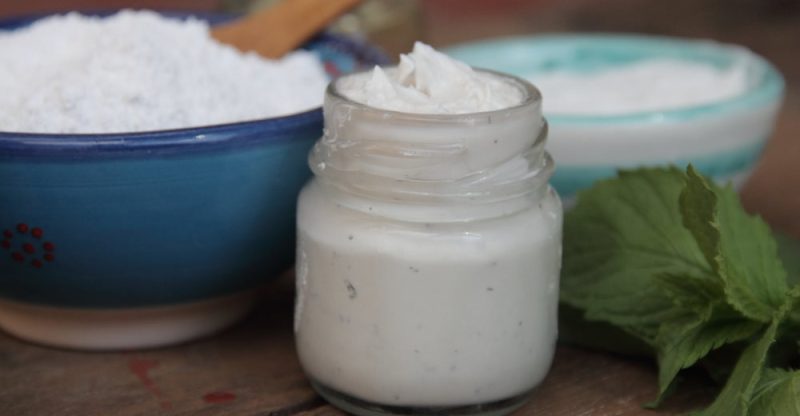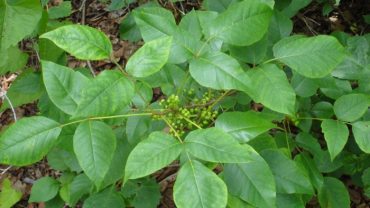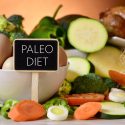How to Make Homemade Baking Soda Toothpaste
This homemade baking soda toothpaste is a great alternative to store-bought options. It is inexpensive, easy to make, and has many benefits for your teeth. In addition, you can make it with ingredients you likely already have and help your family avoid some chemicals found in commercial brands!
If you care about your health and your family’s health, you put a lot of thought into what you put on the table and what they eat. But, of course, this applies to toothpaste as well.
Commercial toothpaste includes substances that you wouldn’t give to your worst enemy, and they have no place in toothpaste. Fortunately, making an excellent, basic homemade baking soda toothpaste is inexpensive and simple.
The formula below is at least as effective as store-bought toothpaste. All of the components may already be in your cupboard. Furthermore, making a batch will be far less expensive than purchasing a tube of natural toothpaste at your local health food shop.
Harmful Ingredients in Commercial Toothpaste
Let’s start with some of the problematic components often contained in commercial toothpaste (some of which are likely hazardous, while others are just unneeded), which you can skip by producing your own baking soda toothpaste:
- Artificial colors are used. Cancer, skin rashes, and behavioral issues have all been linked to food dyes. After all, who cares what color your toothpaste is?
- Artificial flavors are used. Thank you, but we’d prefer to remain with natural taste.
- Fluoride. This material, according to the American Dental Association, prevents cavities. Recent research, however, suggests that the reverse may be true. Unfortunately, it also has a slew of negative side effects.
- Glycerin. This is a natural dietary byproduct that contributes to a pleasant mouthfeel. Although it is usually safe to eat, it may interfere with tooth mineralization. As a result, leaving toothpaste out may be a smart idea.
- Peroxide (H2O2). This is known for its ability to whiten teeth. However, that impact takes a long time to manifest (much longer than a typical brushing session). Furthermore, it might be damaging to your mouth’s delicate tissue.
- Propylene glycol is a kind of polyethylene glycol. This fossil fuel processing byproduct is also utilized to create antifreeze and is used to provide a smooth mouthfeel. It has no place in your mouth.
- Artificial sweeteners such as saccharin.
- Sodium lauryl sulfate is a kind of sodium lauryl sulfate. It’s a foaming agent that’s been connected to an elevated incidence of canker sores. So it’s not something we want in our stomachs.
- Titanium dioxide is a mineral that is found in nature. This white powder is used to manufacture dazzling white toothpaste. It’s been related to poor gut health in recent research. We don’t mind if the toothpaste is off-white.
- Triclosan. An antimicrobial agent that has been connected to a variety of health and environmental issues. Don’t even consider using triclosan-containing toothpaste (or anything else).
Why Do We Brush Our Teeth?
Let’s begin by discussing why we brush our teeth and what decent toothpaste, such as homemade baking soda toothpaste, should provide. We brush our teeth to remove any acidic or sugary/starchy food particles and any traces of plaque – a sticky biofilm that may coat our teeth and cause disease.
Brushing – the mechanical procedure — is the most effective technique to prevent tooth decay. It matters significantly more than toothpaste, mouthwash, or any other product! You may be astonished to find that you don’t need any toothpaste to clean your teeth. Instead, use a soft-bristled toothbrush to scrub all of the surfaces of your teeth (as well as your tongue and all of the other characteristics within your mouth). When you’re away from home or in between meals, “dry brushing” is a terrific method to clean your teeth.
On the other hand, brushing may be made even more successful by using the correct toothpaste.
Characteristics of a Good Toothpaste
Brushing away the plaque is made simpler by adding a little amount of something grainy (a very mild abrasive). However, remember that using too much or too harsh an abrasive will cause you to remove more than simply plaque and food particles!
Baking soda is a moderate abrasive that is inexpensive, commonly accessible, and quite effective. For basic teeth cleaning, dipping your wet brush in simple, dry baking soda is fast, straightforward, and efficient. Brushing with ordinary baking soda, on the other hand, will not wow anybody with its taste (salty) or texture (mildly gritty). It’s also difficult to keep it on your brush.
How to Make
This is where making your own baking soda toothpaste comes in: you’ll be able to create a solution that gently removes plaque and remains on your brush and feels/tastes wonderful in your mouth. Simply combine baking soda and enough water to produce a paste. However, a few more modifications result in a much better paste with a smoother texture and flavor to conceal some of the saltiness. Baking soda isn’t required at all.
You’ll get a simple DIY baking soda toothpaste recipe. However, feel free to play around with other mixes and quantities until you find a toothpaste that suits you and your family.
Here’s a list of easy-to-find components, mild abrasives, and liquids to mix them with for homemade baking soda toothpaste. I’ve added tooth-friendly flavorings and sweeteners to make the paste more palatable.
Ingredients to consider:
- Soda (baking) (sodium bicarbonate). Baking soda may be used in a variety of ways. It works as an excellent mild abrasive in toothpaste, dissolving completely without leaving any grit behind. Because it is alkaline, it also aids in the neutralization of excess acid in the mouth.
- Bentonite is a kind of clay. This finely powdered substance is somewhat abrasive, alkaline (helps balance excess acid in the mouth), contains trace minerals, and aids in the removal of toxins from the body. If you have silver fillings, you should avoid clay since it tends to suck mercury out.
- Nibs of cacao (or powder). Cacao is raw chocolate that is high in nutrients and trace minerals. It is not to be confused with cocoa, which is a chemically prepared product. It also functions like a mild abrasive in toothpaste. It’s also delicious.
- Coconut oil is a kind of oil that comes from the coconut. This incredible chemical has the potential to be the world’s most versatile food and health supplement. It provides toothpaste a pleasant texture, binds other ingredients together, and helps eliminate bad bacteria like candida and tooth rot germs while boosting good bacteria. If at all feasible, use organic, cold-pressed, and unrefined coconut oil. Coconut oil has a strange property: it melts at about 76 degrees Fahrenheit. Your toothpaste will be quite stiff in cold temperatures, runny, and prone to separating if the temperature rises beyond 75 degrees Fahrenheit. The effectiveness of your toothpaste is unaffected by this changeability. However, DIY toothpaste containing coconut oil should be kept in a jar rather than a tube. When it’s quite hard, scoop it out; if it liquefies, dip your brush in it (and re-mix it if it separates). Warm the jar in a container of hot water for 10 or 15 minutes before measuring out the now-liquified oil and combining it with other ingredients to take advantage of coconut oil’s low melting point.
- Diatomaceous earth is a kind of diatomaceous earth that is (DE). These jagged shards of silicon are the remnants of diatom shells, which are microscopic aquatic organisms. It’s a gentle abrasive with trace minerals.
- Essential oils are a kind of essential oil that is used to Essential oils may be used to hide unpleasant tastes while adding pleasant ones. In addition, some provide extra advantages. For example, clove oil is antimicrobial, peppermint oil improves energy and is a popular toothpaste taste, and cinnamon oil fights infections and inflammation.
- Guar gum is a kind of gum made from guar beans. When combined with liquid, this natural chemical generates a gluey material, which helps thicken toothpaste and prevent it from separating. Before adding any water, mix the dry powder with the other dry ingredients. Otherwise, guar gum powder is difficult to dissolve in water without forming lumps.
- A pinch of salt Sea salt is a moderate abrasive with a high concentration of trace minerals.
- Spices. Powdered spices like cloves, cinnamon, ginger, and mint may be used to flavor homemade toothpaste while also providing a light abrasive. To prevent a gritty paste, make sure they’re finely ground.
- Stevia. Stevia is a wonderful alternative for tooth-friendly sweetness. Powdered extract, powdered stevia leaf, or plain or flavored liquid stevia extract are all viable options.
- Water. Water is a suitable basic moistening agent for dry powders if you don’t like coconut oil (or don’t have any). It also has the benefit of staying liquid down to 32 degrees Fahrenheit. As a result, once you make a paste, it will maintain its stiffness regardless of changes in ambient temperature.
- Xylitol. We don’t like using it as a sweetener in food because of the health risks and adverse effects of ingesting big amounts of it. However, since it is a sugar alcohol, it has a distinct characteristic that might make it an excellent sweetener for toothpaste. Bacteria are attracted to sugar alcohols. However, since they cannot digest them, they perish after swallowing them. Therefore, sugar alcohols may help with remineralization as well.
Tips:
- Adding extra baking soda to your paste can help keep it firmer in hot weather. Conversely, if you add less baking soda, it becomes less hard, making it simpler to dispense in the winter if your home is chilly.
- The flavor of baking soda toothpaste is rather salty.
- Using the whole amount of xylitol results in a salty-sweet flavor that children may like.
- While brushing with strong-flavored essential oil(s), the flavor doesn’t alter significantly, but it does leave a nice aftertaste (instead of just saltiness).
How to apply:
Brush your teeth and any other surfaces in your mouth after scooping/applying approximately a 12 teaspoons of toothpaste onto your brush. There’s no need to add water since the paste will instantly liquefy in your mouth. When you’re finished, swish the liquid around to get it into all the nooks and crannies your brush missed. After that, spit out the rest and rinse with water.
Ingredients:
- coconut oil (four tablespoons)
- 2–4 tbsp baking soda (or a mixture of baking soda and sea salt)
- xylitol powder (up to 1 tablespoon) (optional)
- 20 drops essential oil of cinnamon or clove (optional)
- 20 drops essential oil of peppermint (optional)
- a tiny jar of glass
Directions:
- To liquefy coconut oil, place it in a dish of boiling water (depending on your room temperature, this may take up to 15 minutes).
- In a mixing basin, combine all ingredients and whisk until well combined.
- In a closed glass jar, store the completed product.
Frequently Asked Questions
How do you make toothpaste with baking soda?
A: To make toothpaste, you need baking soda, salt, and water. You mix the salt into the water to dissolve it, then add in some of the baking soda at a time until all is dissolved. The next step is adding in another pinch of baking soda and mixing again before adding more salt until no more will dissolve.
Can I brush my teeth with baking soda?
A: Yes, you can! Baking soda will not harm your tooth enamel, and it is a great way to freshen up.
FDA Compliance
The information on this website has not been evaluated by the Food & Drug Administration or any other medical body. We do not aim to diagnose, treat, cure or prevent any illness or disease. Information is shared for educational purposes only. You must consult your doctor before acting on any content on this website, especially if you are pregnant, nursing, taking medication, or have a medical condition.
HOW WOULD YOU RATE THIS ARTICLE?





